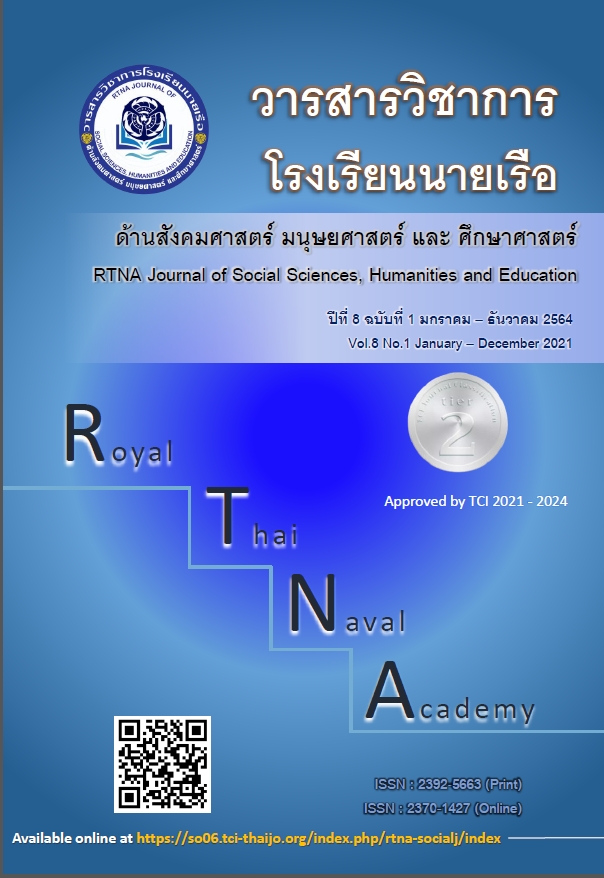Organization of quality assurance information system within basic education institutions Integrate the organization of information system for Integrity and Transparency assessment in the operations of government agencies
Keywords:
Organization of quality assurance information system within basic education, Integrate the organization of information system for Integrity and Transparency Assessment in the operations of government agenciesAbstract
Since the National Education Act 1999 has entered to force, Thailand’s education has been reformed several times. Every educational reformation aims to improve the quality of education and solve the educational crisis that arises. It can be considered that the education of Thailand has been facing a crisis of modern technology and management. Because of the latest situation with the coronavirus outbreak (COVID - 19), education management has to be adjusted. That requires more information technology involved in our daily life. Similarly, the quality assurance system for educational institutions should be technologically reformed for external assessments from the Office for National Education Standards and Quality Assessment. For quality assessment outside educational institutions, the Site Visit assessment should be replaced by an information technology system. Alternatively, Automated QA is an information system for supporting the entire external assessment process. For example, the assessor’s performance is from the paper-based EQA to the digital-based EQA. Personally, the researcher as the primary educational agency in the government sector would like to propose the policy which will integrate the organization of quality assurance information system within primary schools. The objective of the purposed policy is to develop the new management that emphasizes quality. The organization of information systems for assessing the moral and transparency of the operations of government agencies (ITA online) helps to solve the crisis of development of information systems. Creation of an organizational quality culture is suitable for the New Normal era.
References
กฎกระทรวงการประกันคุณภาพการศึกษา พ.ศ. 2561. (2561, 23 กุมภาพันธ์). ราชกิจจานุเบกษา. เล่ม 135. ตอนที่ 11 ก. หน้า 3.
กระทรวงศึกษาธิการ. สำนักงานคณะกรรมการการศึกษาขั้นพื้นฐาน. สำนักทดสอบทางการศึกษา. (2563). การจัดทำรายงานผลการประเมินตนเองของสถานศึกษา. กทมฯ: เอ็น.เอ.รัตนะเทรดดิ้ง.
จรัส สุวรรณเวลา. (2557). วิกฤตการณ์การศึกษาไทย. กรุงเทพฯ: ศูนย์นิทรรศการและการประชุมไบเทค.
ปาลิตา แก้วคำ. (2561). เปรียบเทียบกฎกระทรวงว่าด้วยการประกันคุณภาพการศึกษา 2553 กับกฎกระทรวงว่าด้วยการประกันคุณภาพการศึกษา 2561. สืบค้น 7 เมษายน 2564, จาก https://sites.google.com/a/crru.ac.th/ban-khunkhru-pa-li-ta-kaew-ka/periyb-theiyb-kd-krathrwng-ph-s-2553-kab-ph-s-2561
พงศ์พันธ์ เขียวตา. (2559). การเพิ่มประสิทธิภาพการจัดการระบบสารสนเทศเพื่อการประกันคุณภาพภายในของโรงเรียนขนาดเล็ก สำนักงานเขตพื้นที่การศึกษาประถมศึกษาเชียงใหม่ เขต 3. (การค้นคว้าแบบอิสระ ศึกษาศาสตรมหาบัณฑิต สาขาวิชาการศึกษา (การบริหารการศึกษา)). มหาวิทยาลัยเชียงใหม่. เชียงใหม่.
พระราชบัญญัติการศึกษาแห่งชาติ (ฉบับที่ 4) พ.ศ. 2562. (2562, 1 พฤษภาคม). ราชกิจจานุเบกษา. เล่ม 136. ตอนที่ 57 ก. หน้า 49.
สำนักงานคณะกรรมการป้องกันและปราบปรามการทุจริตแห่งชาติ. สำนักประเมินคุณธรรมและความโปร่งใส. (2564). คู่มือการประเมินคุณธรรมและความโปร่งใสในการดำเนินงานของหน่วยงานภาครัฐ ประจำปีงบประมาณ พ.ศ. 2564. สืบค้น 9 เมษายน 2564, จาก https://itas.nacc.go.th
สำนักงานรับรองมาตรฐานและประเมินคุณภาพการศึกษา (องค์การมหาชน). (2557). วัฒนธรรมคุณภาพ : สร้างคน สร้างชาติ. กรุงเทพฯ: สำนักงานรับรองมาตรฐานและประเมินคุณภาพการศึกษา (องค์การมหาชน).
อลิศลา ริยะสาร. (2558). ยุทธศาสตร์เพื่อพัฒนาการบริหารจัดการระบบประกันคุณภาพภายในสถานศึกษาเพื่อรองรับการประเมินภายนอกรอบสี่ ของโรงเรียนเชียงแสนวิทยาคม. (การศึกษาอิสระ ครุศาสตรมหาบัณฑิต สาขาวิชาการบริหารการศึกษา). มหาวิทยาลัยราชภัฏเชียงราย: เชียงราย.
Downloads
Published
Issue
Section
License
The author has the sole responsibility for the material published in RTNA Journal of Social Sciences, Humanities, and Education, which the editorial team may not agree on that material.
RTNA Journal of Social Sciences, Humanities, and Education owns the copyright of the text, the illustration, or other material published in the journal. No parts or the whole of the material published may be disseminated or used in any form without first obtaining written permission from the academy.






